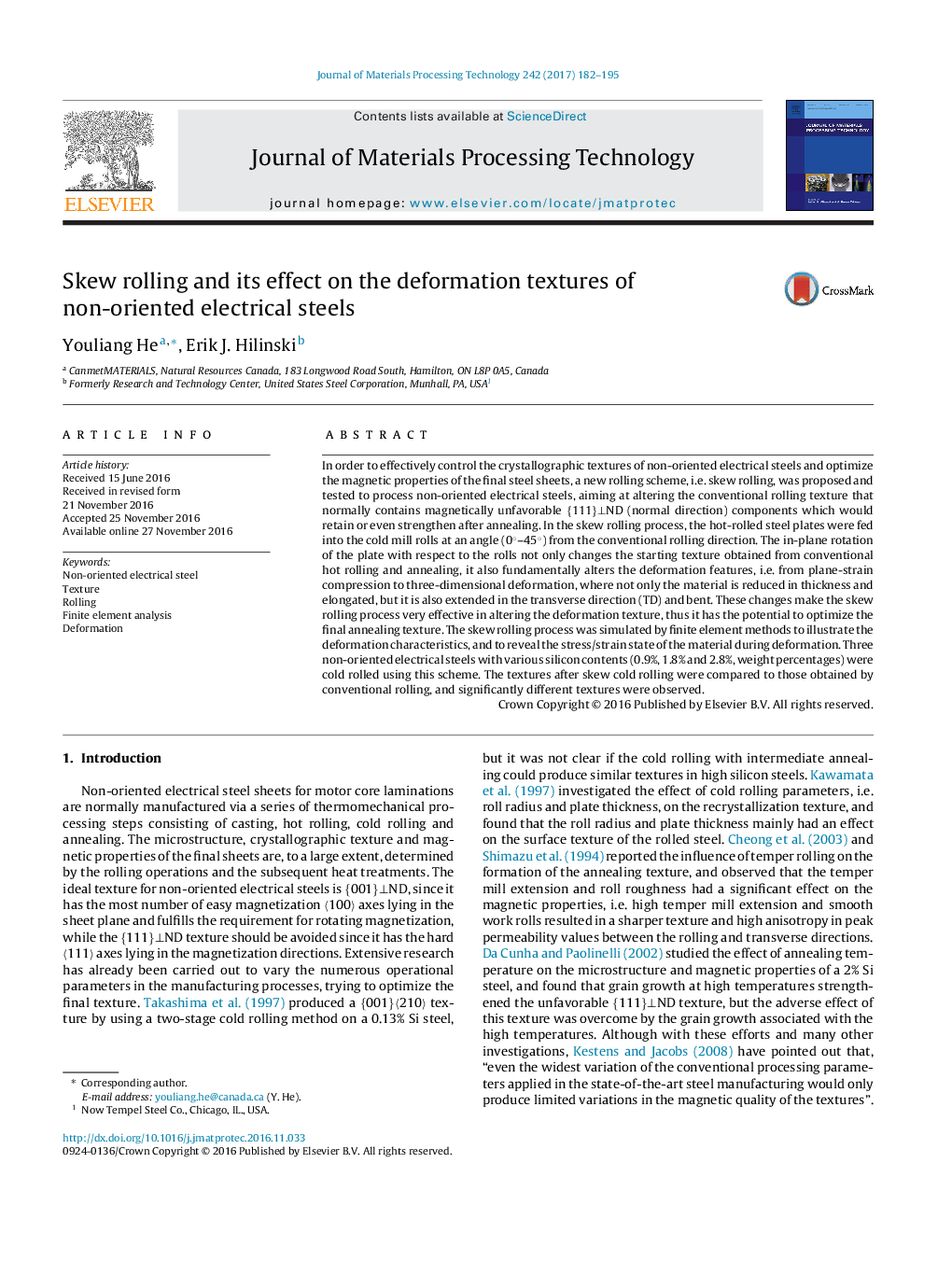| Article ID | Journal | Published Year | Pages | File Type |
|---|---|---|---|---|
| 5017814 | Journal of Materials Processing Technology | 2017 | 14 Pages |
Abstract
In order to effectively control the crystallographic textures of non-oriented electrical steels and optimize the magnetic properties of the final steel sheets, a new rolling scheme, i.e. skew rolling, was proposed and tested to process non-oriented electrical steels, aiming at altering the conventional rolling texture that normally contains magnetically unfavorable {111}â¥ND (normal direction) components which would retain or even strengthen after annealing. In the skew rolling process, the hot-rolled steel plates were fed into the cold mill rolls at an angle (0°-45°) from the conventional rolling direction. The in-plane rotation of the plate with respect to the rolls not only changes the starting texture obtained from conventional hot rolling and annealing, it also fundamentally alters the deformation features, i.e. from plane-strain compression to three-dimensional deformation, where not only the material is reduced in thickness and elongated, but it is also extended in the transverse direction (TD) and bent. These changes make the skew rolling process very effective in altering the deformation texture, thus it has the potential to optimize the final annealing texture. The skew rolling process was simulated by finite element methods to illustrate the deformation characteristics, and to reveal the stress/strain state of the material during deformation. Three non-oriented electrical steels with various silicon contents (0.9%, 1.8% and 2.8%, weight percentages) were cold rolled using this scheme. The textures after skew cold rolling were compared to those obtained by conventional rolling, and significantly different textures were observed.
Related Topics
Physical Sciences and Engineering
Engineering
Industrial and Manufacturing Engineering
Authors
Youliang He, Erik J. Hilinski,
